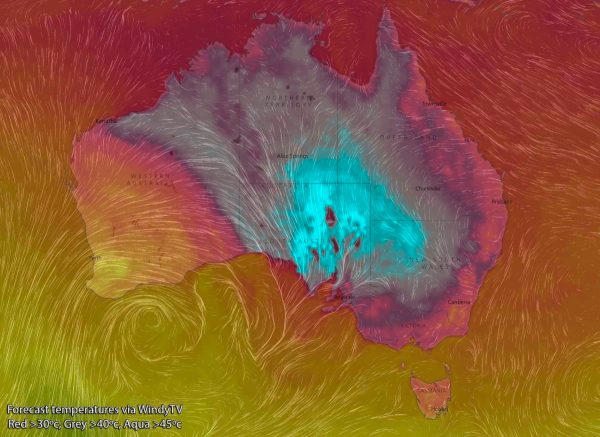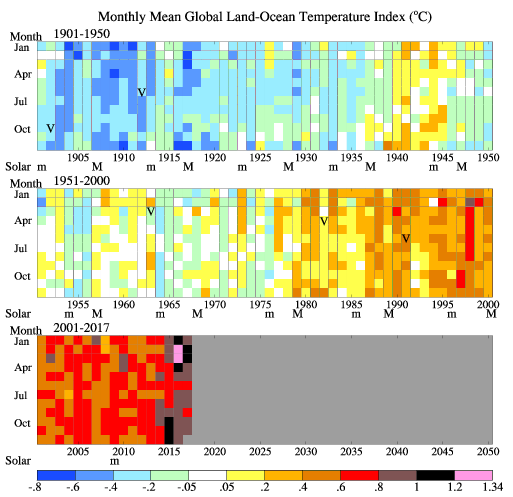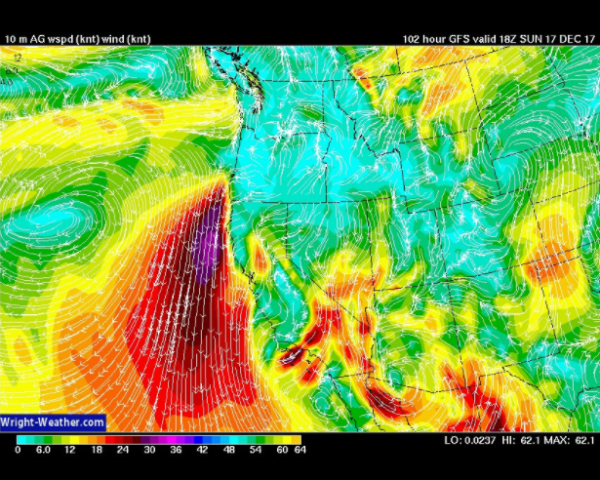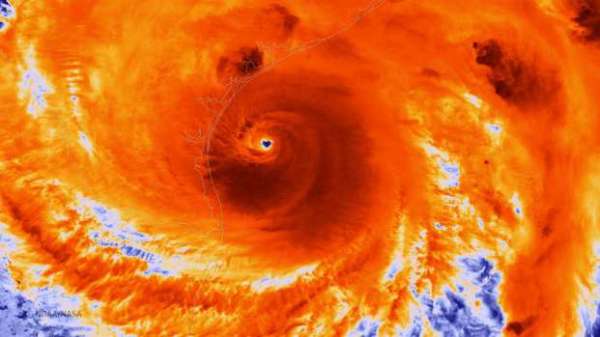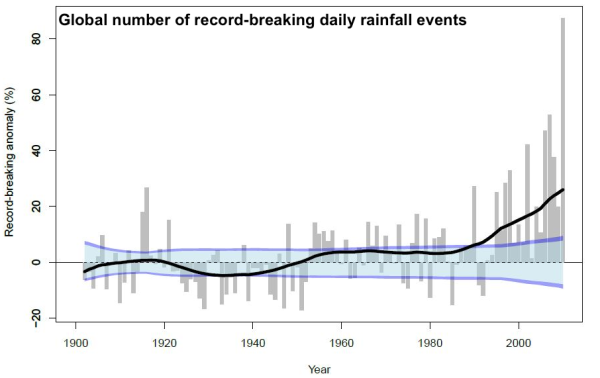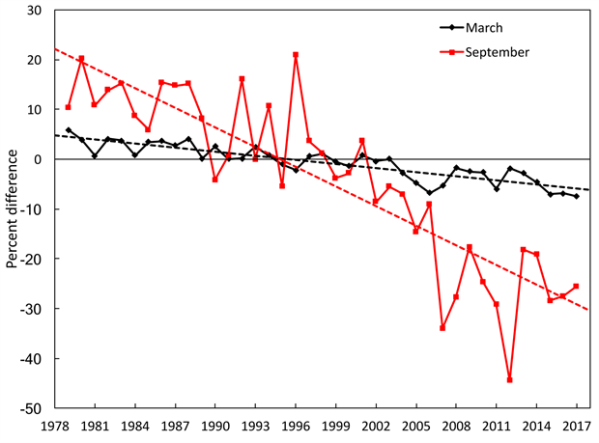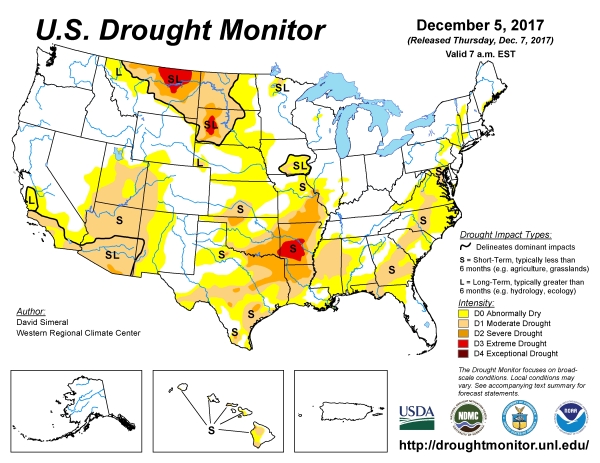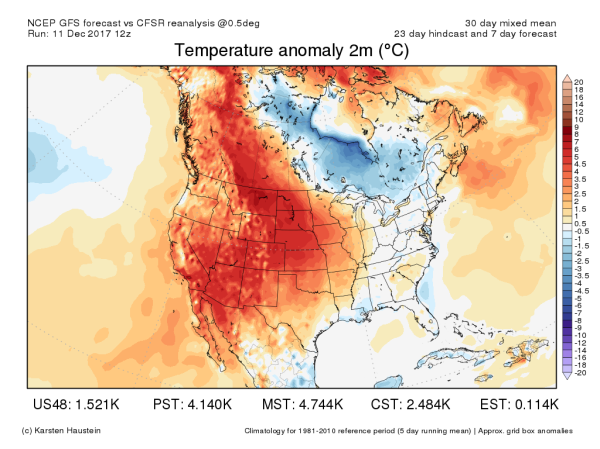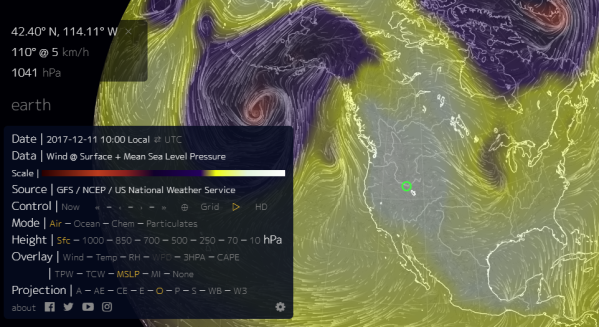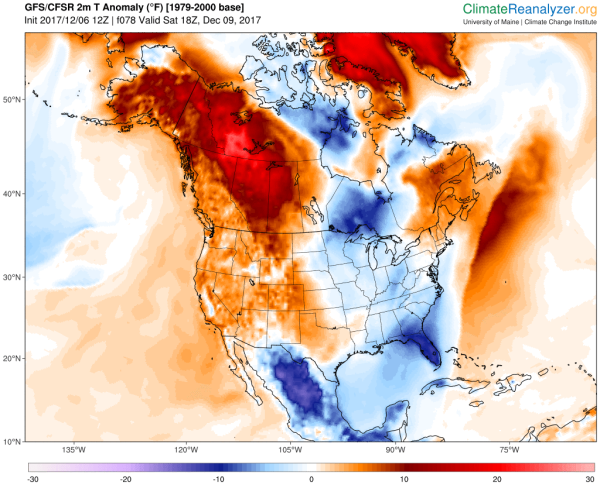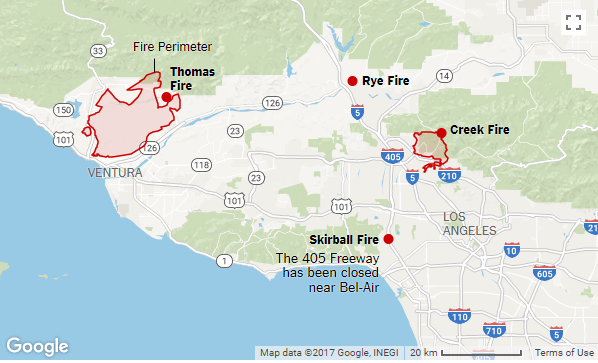Part One: The Story of How Global Warming Turned California into Toast.

The Thomas Fire as seen by a webcam located atop Santa Ynez Peak, a 4300′ mountain 17 miles northwest of downtown Santa Barbara on December 10th.
*****
I want you to indulge me for a minute. I want you to put on your scientist hats with me and engage in a bit of an experiment.
Take a bagel. Cut it in half. Dip about 1/3 of it in water for a couple of seconds. Then put the bagel in the toaster oven for about 5-10 minutes. Remove and see the results.
What you’ll find is that the part of the bagel that hasn’t been dipped in water is, well, toast. The dipped part — significantly less so. If you continued to toast the bagel, eventually the heat from the oven will cause the undipped side to burn. Take even more time and the heat would overcome the moisture on the dipped side and cause it to burn as well.

Here was the result of my at-home experiment after about 10 minutes in the oven at 425 degrees. Can you guess which half was dipped in water?
The more heat, the faster both sides of the bagel burn. But the drier side always first. The wetter side always second.
It’s a simple fact that moisture — whether loaded into bagels or soaking into vegetation and the ground — adds more resiliency and resistance to fire. And this year, given the massive amount of moisture that fell across all of California during the winter and spring of 2016-2017 we didn’t really expect summer and fall to be all that bad of a fire season.
That famous Pineapple Express kept delivering storm after storm after storm. Dams were strained to bursting and over-spill. Roads were washed out. Water rescues were performed. And when all was said and done, California had experienced its wettest water-year in all of the last 122. Given such an obscene amount of water flooding the state, we certainly didn’t expect what happened next. All that moisture soaking into lands, soils, trees, vegetation told us a story. It told us a story that we thought we knew.

Accuweather’s California flood forecast from January 9, 2017 is easy to forget given the record fires we see today. But the temperature and moisture extremes experienced are an aspect of a warming climate. These floods inflicted more than 1.5 billion in damages. Source: Accuweather/Wikipedia.
What we didn’t count on was the oven-like heat that followed. Nor the simple fact that resiliency, no matter how strong at first, is not limitless.
Environmentally speaking, heat is the primary factor in fire hazard so long as fuels are present. Drought is also a factor, though a somewhat less certain one because eventually most fuels are consumed if drought sets in for long enough. As with the bagel, enough heat will eventually blast through any moisture loading so long as that moisture is not recharged to great risk of consuming and conflagrating the fuels that soaked up the moisture in the first place.
At its most basic level, this is why global warming promotes fire hazard. If you bake the forests, grasses and shrubs enough, they will burn.
If there is one thing we know about climate change and weather it is that it promotes extremes. Particularly extreme swings between cooler+wet and record hot+dry as the water cycle is thrown through the atmospheric equivalent of a hyperloop. And the level of extremity California experienced from winter to summer ran a six month race from wettest to hottest. For following the early year deluge, 2017 rapidly rocketed into the hottest summer in California history. Temperatures in many places regularly soared to well above the scorching 100 degree mark. Records for all-time hottest days fell like trees before the wild hurricane.
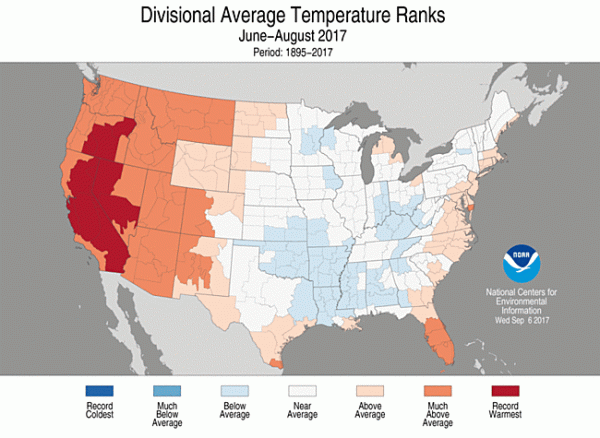
Large sections of the west, including California, experienced their hottest summer on record. Image source: NOAA.
And given so much excessive heat, it didn’t take long for the fires to arise even following a record wet winter.
We won’t go through all the exhaustive numbers of that grim tally of burning. But we will say that more than ten thousand homes and buildings burned. That many souls perished in the blazes. That billions in damages were inflicted. At times, ash and embers rained down across California as if from a volcanic eruption. The skies — marred by great pillars of smoke erupting from a blasted Earth. To say it was merely the worst fire year California has ever experienced would be to do the nightmare of it all an illiterate, unfeeling, lack-compassion injustice.
The summer fires that came with the heat burned mostly the north. The rains, that were so strong in winter took a bad turn once the heat blazed through the lands enough to dry out all that new forest and grass regrowth. Here we were witnessing, before our very eyes, the kind of new conditions 1.1 degrees Celsius worth of global warming was capable of producing.

Firefighter battling the Thomas Fire, which is just 500 acres away from being the largest in California history. Image source: Campus Safety.
Because of that warming, we know now that fire season never really ends any more in California. A point that was driven viciously home as summer proceeded into fall and the fires still raged in October. By December, the heat and dryness had not relented. Not enough at least. The normally wet month had been transformed. And the carry over of that damage done by the furnaces of summer had prepped the land for more burning.
Howling winds from the longest burst of fire fanning winds ever seen for California fed into a new fire. A fire that is now within 500 acres of becoming the largest fire ever to burn in California history. In December. During what should be a wet, cool month. But one that is hotter and drier and fire blasted.
Toasted.
But if we don’t turn back from the warming that caused this, the worst is yet to come.
CREDITS:
Hat tip to Wharf Rat




